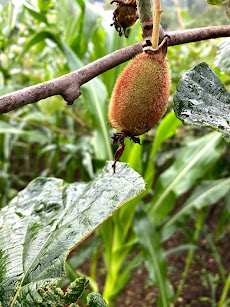This newborn is just four months old. She just woke up from a short nap to find herself in the warmth of her mother’s lap, in front of the fire. Her mother knows that she likes this hour of the day, particularly, and the warmth of the fire, so she compromises every other work accordingly. Her Hajurama sets up the fire every day at that particular time. There’s a separate chulo for the baby. The other two chulos are being used, one for making tea and another for making soup to the mom. It's 3 0’clock in the afternoon. The extra chulo was added with the news of the pregnancy of her mom. This is her mamaghar and she is the eldest of a new generation. They also added four hens and two goats along with a lactating buffalo after the news. In Nepal, after few weeks of the delivery of the child, the mother is taken to her maitighar to stay for a few months until she gets strong enough again. The baby seems to be in peace now, but earlier this day, she was crying a lot. Her Hajurama brought some locally available herbs from the nearby forest where she goes daily for collecting firewood. She hopes the baby’s cry to be because of stomach aches. But she is worried. The other day, the baby was visited by some neighbors and she suspects that a lady might have spelled evil spirit to her granddaughter. Her grandpa is back milking the buffalo. He has a bucket full of milk.
A home with a baby is a home for the baby.
It’s the small life that has just come to existence around whom the whole house will take a
round.
Talking broadly, to come to this point, socially, humans have crawled a long distance. The time that takes for a baby to grow up slowly is taken as an evolutionary trade-off for having highly developed brains. As the baby grows, she is supposed to manage complex reasoning, communication, and social interaction.
I’m 23, raised in a similar way this little girl is being raised, but still not being able to work for myself. Many of us are. I pity me. I pity us, sometimes. Don't you?
























